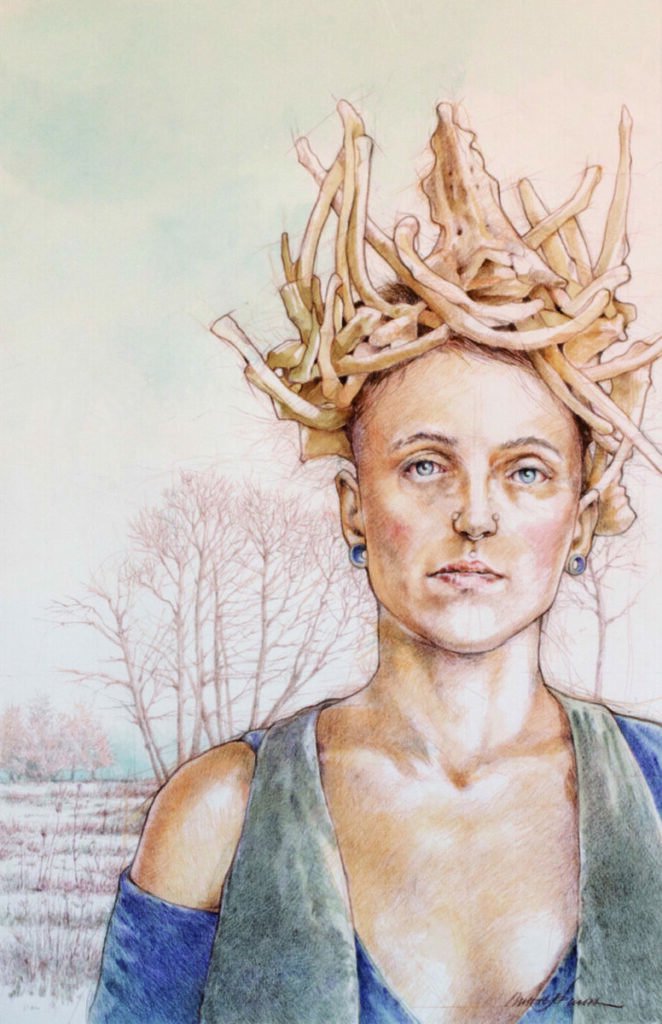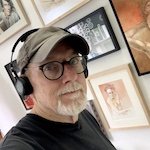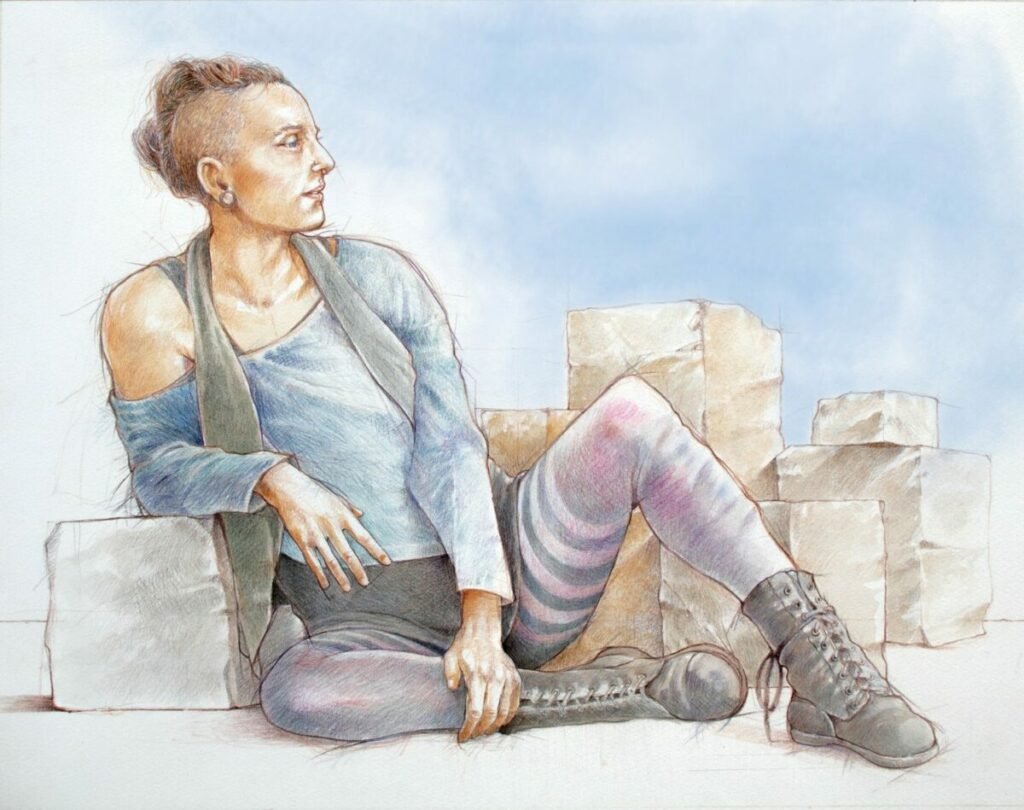
Streetlight: When did you become interested in art?
Michael Powers: I have had an interest in artist expression from a very early age. Several of my grade school friends and I would get together at recess and on weekends and draw. Our subject matter was predominantly World War II–based, as all of our fathers had fought in the War, and it was the constant source of conversations in the lives of so many relatives and neighbors.
I was chosen as one of twenty promising fourth graders, across Cleveland, to participate in a weekly Saturday art camp held at the Cleveland Museum of Art. Every week we spent several hours in different period galleries, drawing and learning about the art and the artists that surrounded us.
It was amazing. My mom would drive me to the museum and drop me in front of the long staircase that led up to the main entrance. I ran, skipped, and jumped, up the stairs past Rodin’s Thinker, in through the front doors, and joined my group. I loved it all!
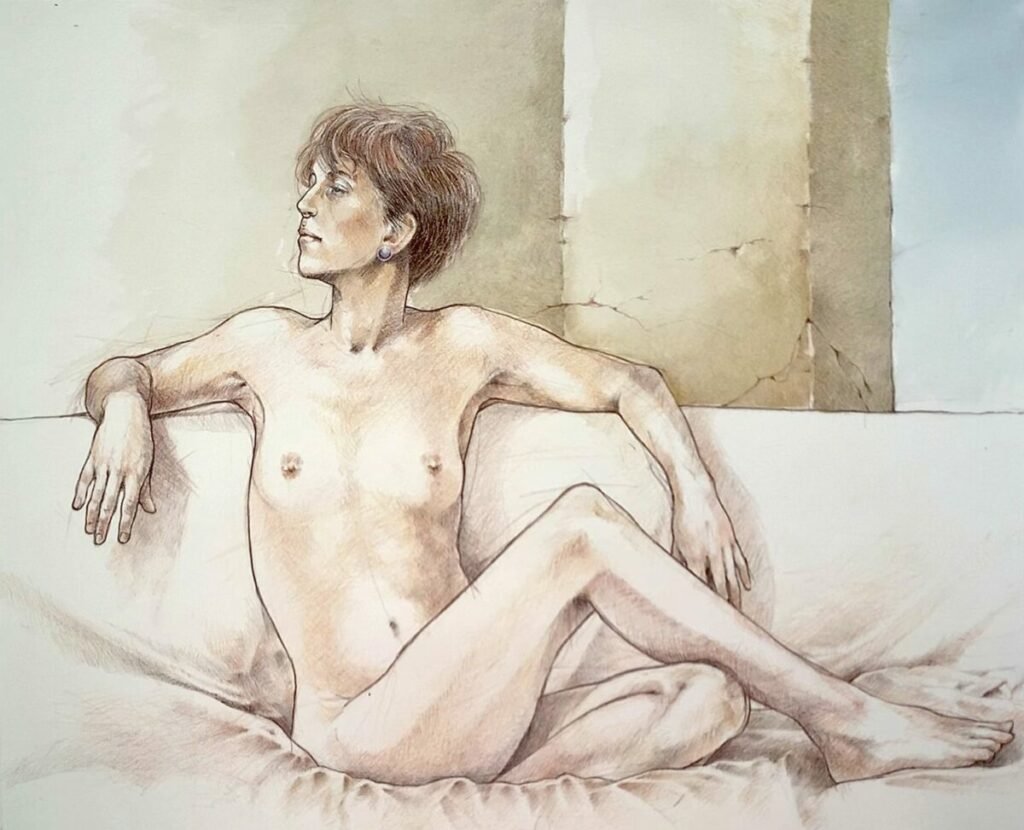
Streetlight: Are there artists in your family?
Michael Powers: In her youth, my great-grandmother was a painter of some accomplishment. I always knew her for the various religiously themed paintings in our house (i.e. The Bleeding Heart of Jesus, Christ the Great Shepard, and so on). We later found several well-accomplished landscapes depicting the family farm which occupied a small city block in the heart of Cleveland’s industrial zone.
My uncle Eddie Ruthe was also a painter. He drew stop-action weather maps for the government to use in predicting weather for a living. At night he painted. He took courses via the mail and struggled to get better. I don’t believe he ever felt very satisfied with his efforts; yet he persisted until his death. He loved talking “Art” with me.
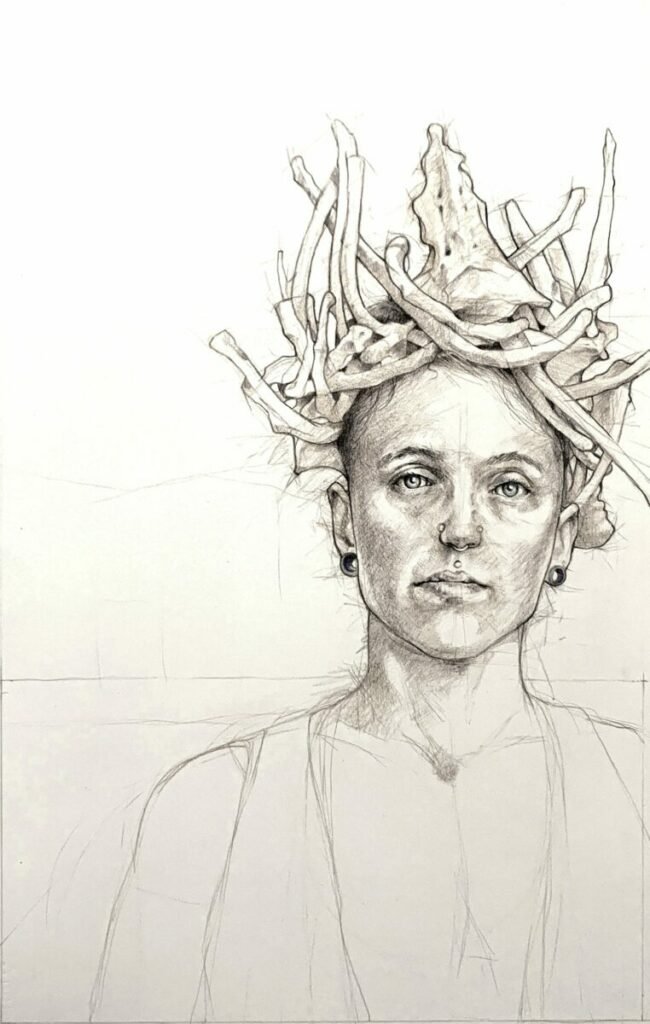
Streetlight: What mediums were you initially drawn to?
Michael Powers: I always loved to draw. A piece of paper and a pencil were all I needed to exit the world of the mundane and enter the world of the possible. I think I may have drawn something every day of my life. Later watercolor and then oil paint became part of my toolbox. Then, at about age nineteen, I discovered India Ink. I first used it do the under drawing on canvas before applying paint. It’s blackness and permanence could be easily seen through a thinned Burnt Umber ground, thus providing a roadmap when applying paint.
Once again I was forced by the beauty of that black line to only draw. To watch the ink flow out of the pen and on to the paper seemed magic to me. There is the stark, the dense, the perfect.
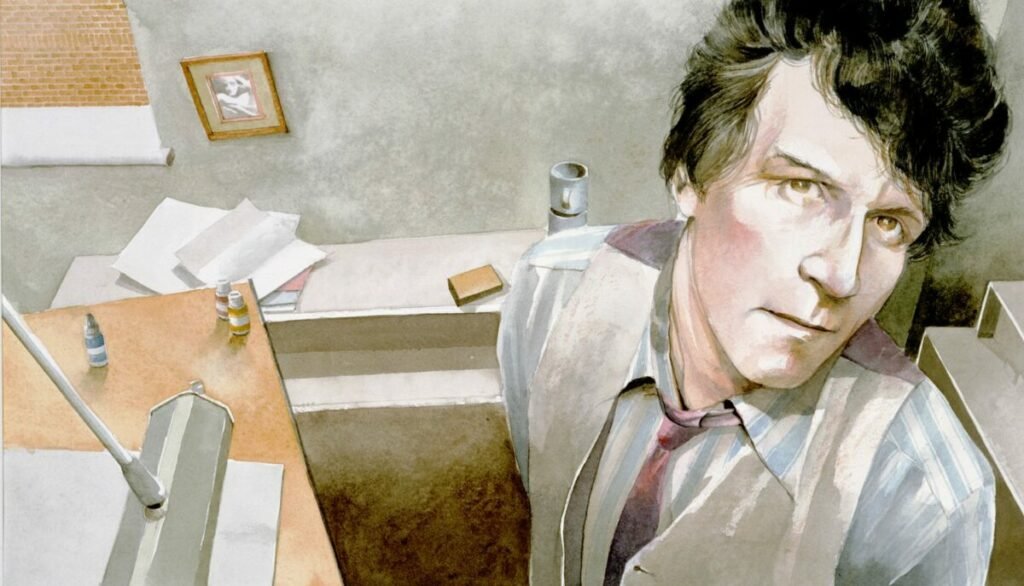
Streetlight: Where did you study art? Who were your mentors and artists you admired?
Michael Powers: I received a four-year football scholarship to the University of Virginia. In my second year I chose to pursue an art degree. Without that scholarship and the opportunities it afforded me, I have no idea where my life in art may or may not have gone. It was a great gift.
My parents were very supportive. They did however draw the line at University. They had hoped I would pursue something more “practical” to make the most of my degree. When dad died, however, I found a file cabinet with every write-up/clipping from every show I participated in. Articles from Charlottesville, Baton Rouge, and beyond. I have no idea how he did that and never managed to speak to me about my art. He was fifty-five when he left the planet.
At UVA, my mentor and figurative art instructor was Robert T. Barbee, Professor of Art. He was my artistic guide all of my life.
I worked primarily in painting and printmaking, cementing this artistic direction. My work was driven by my developing mastery of the human figure as a primary subject.
Figurative art that is quite personal became the cornerstone of my work. I’m drawn to people, their lives, their experiences, and who they are or were. Figurative work keeps me connected to life. People and their bodies are translucent membranes whose skin betrays the subjects’ thoughts, emotions and dreams.
As for artists I admire? Edward Hopper, John Singer Sargent, Gustave Courbet, Winslow Homer, Arikha, Andrew Wyeth, George Bellows, and others – but always Sargent.
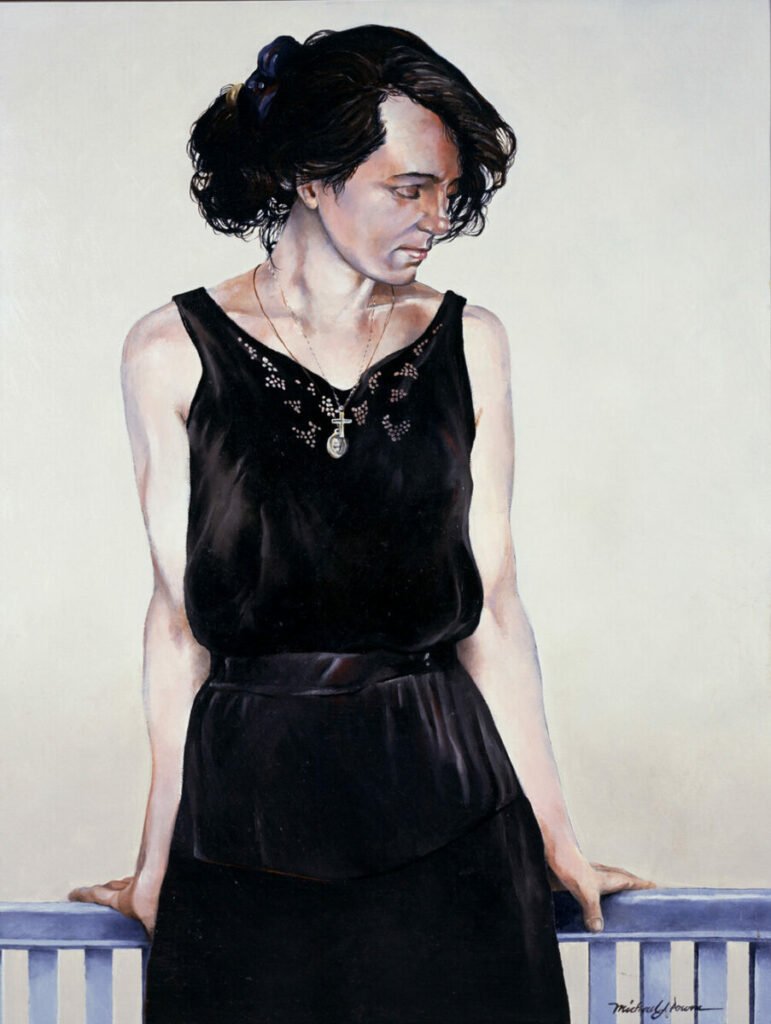
Streetlight: Since your work includes many mediums, how has your illustration/design/artwork evolved over time?
MIchael Powers: I “see” better. My work materials/mediums/digital platforms are finally subservient to my ideas. It’s no longer a fight to the finish.
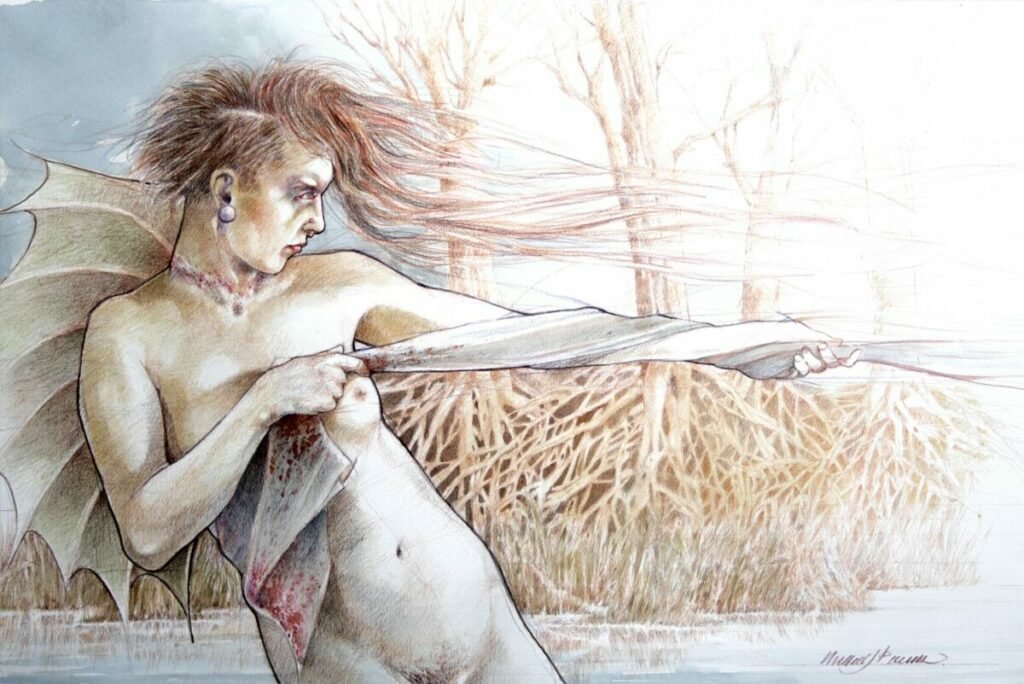
Streetlight: How would you describe your drawing/painting process? Influences?
Michael Powers: Strong emotions drive my process. There is the impulse, the sketch dashed off in an effort to clear my mind. Then there is collaboration – What does the model think? How can we make it better? The studies follow, always whittling away at the pose and shaping the piece to fit some notion wandering around in my head.
In my recent work, I scale the drawing up (or down) and redraw it on the watercolor paper or gesso panel. Here the drawing gets refined. Here I find myself both compelled and stressed. I study it intensely, turn it upside down, walk away from it, hang it on the wall in hopes that it will complete itself. I hide it, then put it up for everyone to see and make comments. I see it in dreams. I see it in nightmares.
Then there are the times that it all comes together like superglue. Idea, collaboration, and execution all running together and the whole thing done in – a seeming instant.
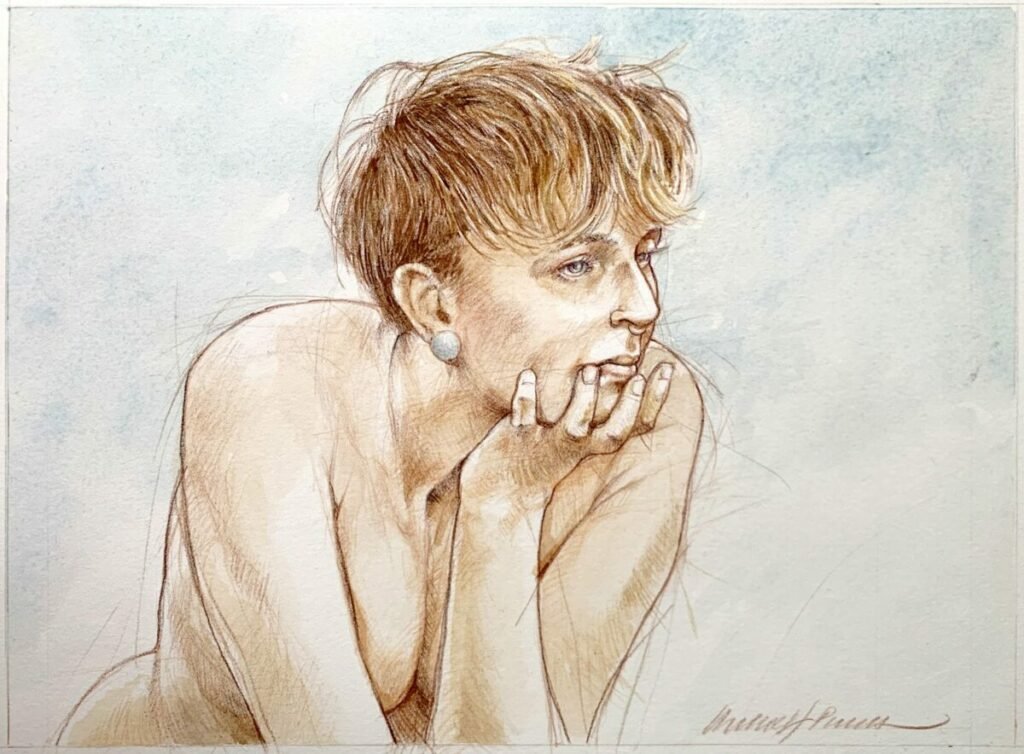
Most of all I lean on the power of collaboration, respect, and a willingness to “make something,” to get a piece done.
Streetlight: Influences in your art?
I don’t know what those are. I suppose I am influenced by a desire to find visual harmony. To be able to sit back once in a while and say “yah that works.”
—Interview by Elizabeth Howard, Streetlight‘s Art Editor

Share this post with your friends.

